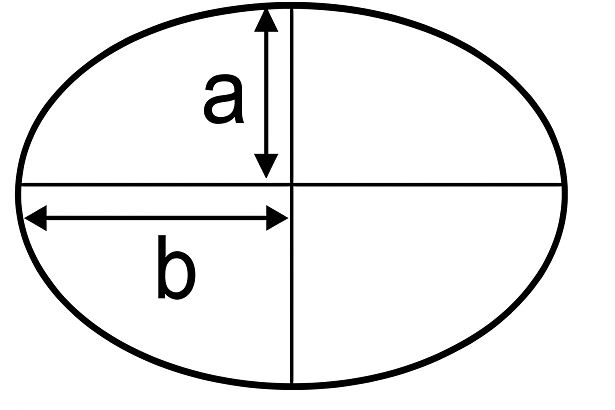Square Footage Calculator
The Square Footage Calculator online is an essential tool for homeowners, contractors, and designers. It simplifies measurements for house building, painting, and flooring, making projects more efficient and cost-effective.
The Square Footage Calculator online is an essential tool for homeowners, contractors, and designers. It simplifies measurements for house building, painting, and flooring, making projects more efficient and cost-effective.

From designing a picturesque garden patio to undertaking a sophisticated architectural project, the ability to accurately calculate the area of an ellipse is a surprisingly practical skill. This guide provides a clear, step-by-step approach to calculating the square footage of any elliptical shape using two simple measurements. We’ll delve into the formula, its real-world applications, and answer common questions to help you master this essential geometric calculation.
An ellipse is essentially a stretched or "squashed" circle. Where a circle has a single, constant radius, an ellipse has two distinct axes that define its shape:
To calculate the area, we don't use the full axes but rather their halves, known as the semi-major axis and the semi-minor axis.
Think of 'a' as the "long radius" and 'b' as the "short radius" of your ellipse.
The formula to calculate the area of an ellipse is both simple and elegant:
A = π · a · b
Where:
This formula is a beautiful extension of the area of a circle (A = πr²). In a circle, the semi-major and semi-minor axes are equal (a = b = r), so the ellipse formula naturally becomes π · r · r, or πr².
Calculating the area of an elliptical space is straightforward. Follow these simple steps:
Step 1: Measure the Major and Minor Axes
First, identify the longest and shortest diameters of your ellipse.
Step 2: Calculate the Semi-Major and Semi-Minor Axes (a and b)
Once you have the full axis measurements, simply divide each by two to find your 'a' and 'b' values.
Step 3: Apply the Area Formula
Now, plug your 'a' and 'b' values into the area formula: A = π · a · b.
The result is the square footage of your ellipse.
Let's say you are planning an elliptical lawn in your backyard.
You will need approximately 220 square feet of sod for your new lawn.
Calculating the area of an ellipse is not just a math problem; it's a practical tool for various projects: